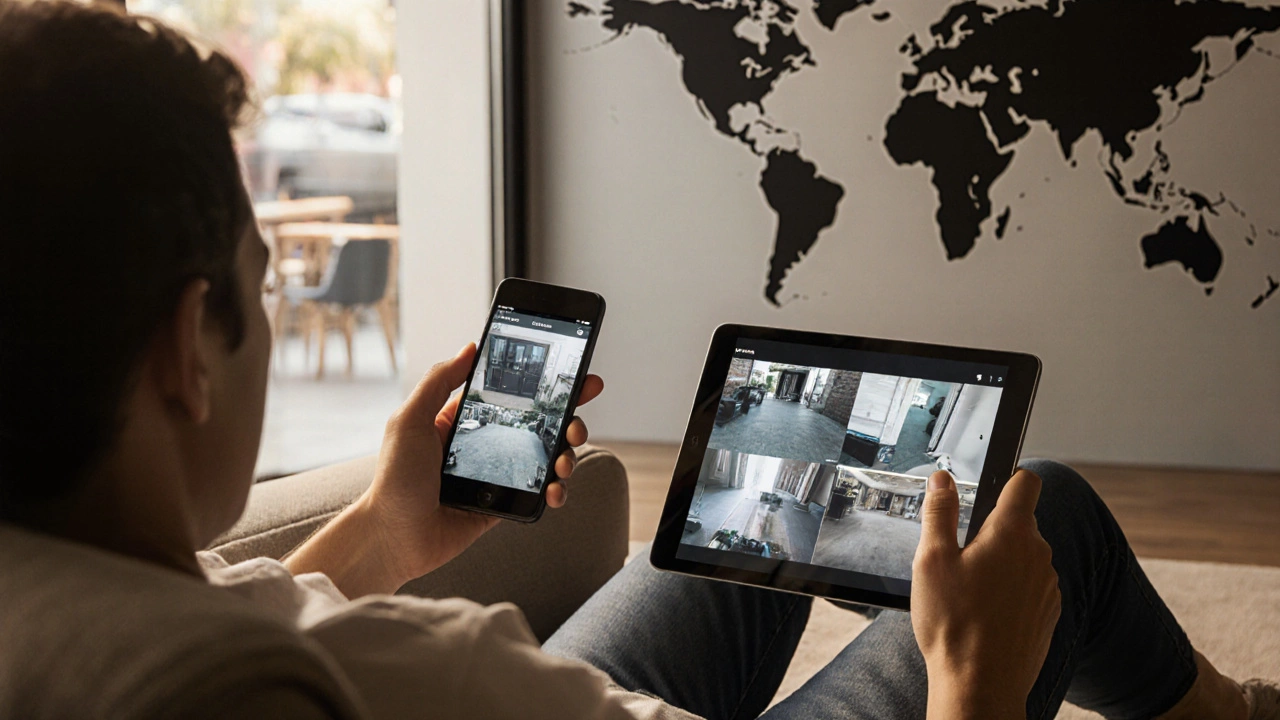When working with watch security cameras online, the ability to view live video feeds from anywhere via the internet. Also known as remote camera monitoring, it lets you keep an eye on home or business spaces in real time, whether you’re on the couch or miles away. This capability watch security cameras online hinges on three core parts: a camera that can stream, a network that can carry the data, and a device that can display the feed.
First, security cameras, devices that capture video and often audio for surveillance purposes come in wired, wireless, and hybrid forms. Wired models guarantee stable bandwidth but need cables, while wireless cameras rely on Wi‑Fi or cellular links for flexibility. Second, a wireless security camera, a camera that transmits video over Wi‑Fi without physical connections often includes battery packs, making placement easy on walls or poles. Third, motion sensor, technology that detects movement and triggers recording or alerts adds intelligence – you get a live view only when something happens, saving bandwidth and storage.
When you combine these three, you get a system where the camera sends footage over the internet, the motion sensor decides when to push notifications, and you can check the feed on a phone, tablet, or PC. A fourth piece often shows up: the video doorbell, a door-mounted camera with two‑way audio that streams live video to your device. It’s essentially a specialized security camera aimed at entry points, and many users treat it as the front‑door extension of their remote‑watch setup.
These components create a set of semantic relationships: watch security cameras online encompasses live streaming, watch security cameras online requires a stable internet connection, and motion sensors influence when you actually view the feed. Understanding those links helps you troubleshoot common hiccups, like lag when Wi‑Fi drops or missed alerts because the sensor’s range is limited.
Choosing the right gear starts with the environment. Outdoor areas need weather‑proof housings, usually rated IP66 or higher, and a camera with infrared LEDs for night vision. Indoor rooms benefit from lower‑cost models that focus on resolution—4K streams are great if you want facial detail, but they demand more bandwidth. For renters or folks who move often, a battery‑powered wireless security camera offers the least hassle; just charge the battery, mount the bracket, and you’re set. If you already have a smart hub, look for devices that support the same protocol—like Z‑Wave or Zigbee—so you can add motion sensors without extra bridges.
Power reliability is another hidden factor. Many users assume the camera will run forever on a battery, but cold weather can cut runtime by half. Pairing a solar panel with a wireless camera can extend the life, especially for garden or driveway locations. Meanwhile, motion sensors often have their own power source, so make sure they’re placed where sunlight or a nearby outlet can keep them charged.
Privacy concerns pop up whenever you stream video over the internet. Most reputable brands use end‑to‑end encryption, meaning the video travels in a secure tunnel from camera to your device. Still, check the privacy policy to see if recordings are stored on the cloud and who can access them. If you prefer total control, look for an offline NVR (network video recorder) that saves footage to a local hard drive.
Once your hardware is in place, the software side is straightforward. Install the manufacturer’s app, link the camera to your Wi‑Fi network, and enable push notifications for motion events. Test the live view from both inside and outside your home network—this ensures the remote path works. If you notice latency, try moving the router closer or adding a Wi‑Fi extender. Some users set up a VPN (virtual private network) on their router for an extra layer of security; the VPN masks your home IP address, making it harder for hackers to target your cameras.
In practice, watching security cameras online becomes a habit. You might check the feed when you get a mail notification, or glance at the driveway video when you hear a noise. The key is to keep the system simple: reliable camera, stable Wi‑Fi, and sensible motion thresholds. With those basics nailed down, you can explore advanced features like facial recognition, geo‑fencing, or integration with smart locks.
Below you’ll find a curated set of articles that dive deeper into each of these topics. From choosing the best wireless security camera in 2025 to troubleshooting motion‑sensor false alarms, the collection covers the full range of questions you might have about watching your security cameras online. Let’s get you from setup to peace of mind, one article at a time.

Learn how to watch security cameras online safely. Explore apps, browser access, cloud services, bandwidth needs, setup steps, and top security tips.